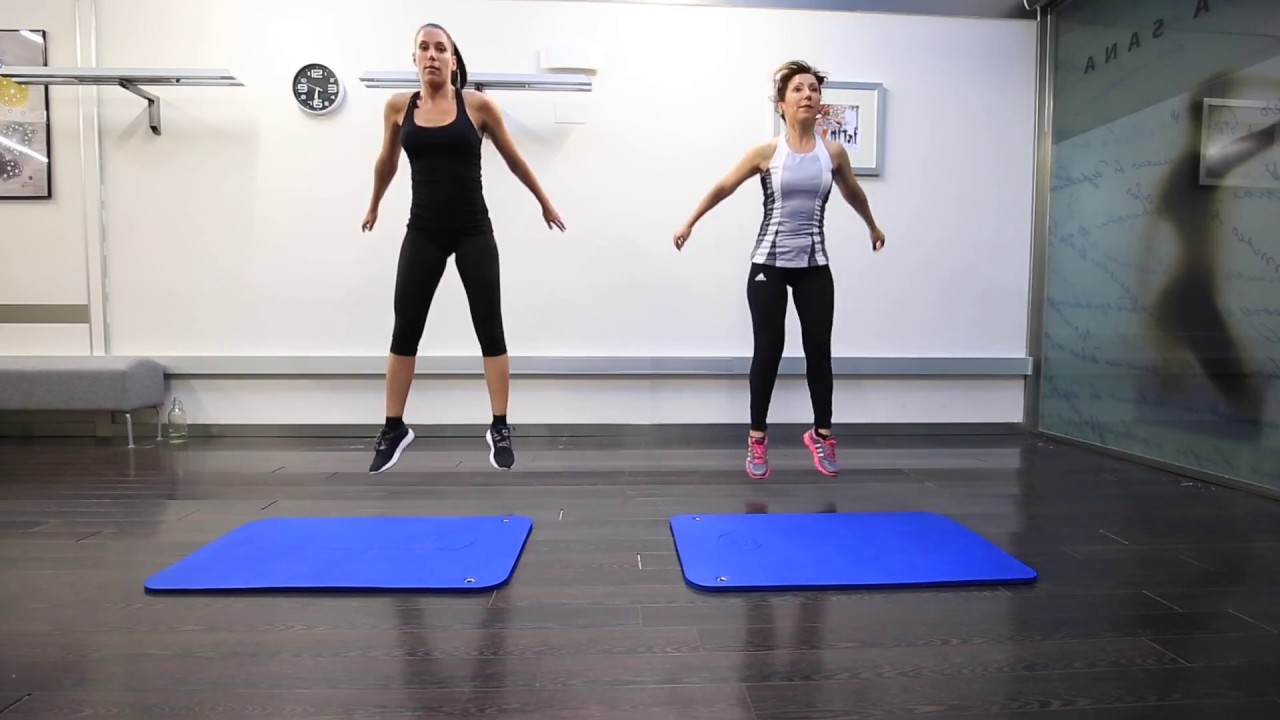Home>Misc>Featured>How Many Calories Per Minute In Interval Training


Featured
How Many Calories Per Minute In Interval Training
Modified: January 22, 2024
Discover how many calories you can burn in just one minute with high-intensity interval training. Get featured in our comprehensive guide to effective calorie-burning workouts.
Introduction
Welcome to the world of interval training, where you can maximize your calorie burn and achieve your fitness goals in less time. Interval training is a popular and effective workout method that combines bursts of intense exercise with periods of rest or lower intensity. Not only does it challenge your body, but it keeps your workouts interesting and varied.
Are you tired of spending hours at the gym without seeing the results you desire? Interval training might just be the solution you’ve been looking for. By incorporating short bursts of high-intensity exercise followed by brief recovery periods, interval training can help you torch calories, boost your metabolism, and improve your overall fitness level.
But how exactly does interval training work? And how many calories can you burn during a single session? In this article, we’ll delve into the world of interval training and explore the factors that influence calorie burn. Whether you’re a fitness enthusiast looking to switch up your routine or a beginner eager to kickstart your fitness journey, this guide will provide you with a comprehensive understanding of interval training and its calorie-burning potential.
Before we dive into the specifics, it’s important to note that everyone’s body is different, and individual calorie burn can vary. The numbers provided in this article are estimations and should be used as a general guide rather than an exact measurement. Keep in mind that numerous factors, such as age, weight, gender, fitness level, and effort exerted, can influence your calorie burn during interval training.
Now, let’s embark on this interval training journey together and discover the secrets to maximizing your calorie burn and achieving your fitness goals!
Understanding Interval Training
Interval training is a workout method that alternates between high-intensity exercise and periods of rest or lower intensity activity. This type of training challenges your body by pushing you to your maximum effort during the high-intensity intervals and allowing for recovery during the rest periods.
The concept behind interval training is based on the principle of pushing your body outside its comfort zone. By performing short bursts of intense exercise, you trigger the “afterburn effect,” also known as excess post-exercise oxygen consumption (EPOC). This means that even after your workout, your body continues to burn calories at an elevated rate to help restore itself to its pre-exercise state. This makes interval training a highly effective method for increasing calorie burn and improving overall fitness.
Interval training can be adapted to various fitness levels and preferences, making it accessible to people of all abilities. Whether you’re a beginner or a seasoned athlete, you can customize your intervals to suit your fitness level and goals.
There are different ways to structure interval training workouts. One common approach is the ratio-based method, where you perform a certain duration of high-intensity exercise followed by a specific duration of rest or lower intensity activity. For example, you may perform a 30-second sprint followed by a 60-second rest period, repeating this cycle for a set number of repetitions.
Another popular method is the pyramid-style approach, where you gradually increase and then decrease the duration of the high-intensity intervals. For example, you may start with a 30-second sprint, then increase to a 45-second sprint, followed by a 60-second sprint, and then decrease back down to a 45-second sprint and 30-second sprint.
The beauty of interval training is its versatility. You can incorporate a wide range of exercises and activities into interval workouts, including running, cycling, bodyweight exercises, and even swimming. This allows for endless variety and prevents boredom, keeping you engaged and motivated.
Before you embark on an interval training regimen, it’s important to warm up properly to prepare your body for the intense exercise ahead. A dynamic warm-up that includes movements such as lunges, squats, arm circles, and light jogging can help activate your muscles and increase blood flow to the working muscles.
Now that you have a better understanding of interval training, let’s explore the factors that affect calorie burn during these workouts.
Factors Affecting Calories Burned
The number of calories burned during interval training can vary depending on several factors. Understanding these factors can help you make the most of your workouts and optimize your calorie burn. Here are the key factors that can influence the calories burned during interval training:
- Intensity: The intensity level of your high-intensity intervals plays a significant role in the calorie burn. The harder you push yourself during these intervals, the more calories you will burn. Aim to work at a level where you are exerting about 80-90% of your maximum effort.
- Duration: The length of your high-intensity intervals and the overall duration of your interval training session can impact calorie burn. Longer intervals or longer workout sessions generally result in more calories burned. However, it’s essential to find a balance that suits your fitness level and allows for proper recovery.
- Body Weight: Your weight can also influence the calories burned during interval training. Generally, individuals with higher body weight burn more calories compared to those with lower body weight since moving a heavier body requires more energy.
- Fitness Level: Your current fitness level plays a role in calorie burn during interval training. As you become fitter, your body becomes more efficient at performing exercises, which can result in slightly lower calorie burn. However, you can continue to challenge yourself by increasing the intensity or duration of your intervals to maintain an effective calorie burn.
- Rest Periods: The length and intensity of your rest periods between high-intensity intervals can impact calorie burn. Shorter rest periods or active recovery exercises during rest periods can help keep your heart rate elevated and increase calorie burn throughout the workout.
- Effort Exerted: The level of effort you put into each interval can affect calorie burn. Pushing yourself to your maximum effort and maintaining proper form can help maximize calorie expenditure during each high-intensity interval.
- Individual Differences: It’s important to remember that every individual is unique, and there may be variations in calorie burn due to genetic factors, metabolism, and other inherent characteristics. This is why it’s essential to listen to your body and make adjustments based on your own experience and feedback.
By considering these factors and finding the right balance for your individual needs, you can optimize your calorie burn during interval training and achieve your fitness goals more effectively.
Calculation of Calories Burned
Calculating the precise number of calories burned during interval training can be challenging due to the various factors involved. However, there are several methods you can use to estimate your calorie expenditure. Please note that these calculations provide an approximation and may vary between individuals.
One common approach is to use fitness trackers or wearable devices that monitor your heart rate and movement. These devices can provide an estimate of your calorie burn based on your heart rate data and other factors such as age, weight, and gender. While they may not be 100% accurate, they can give you a general understanding of your calorie expenditure during your interval training sessions.
You can also utilize online calculators that take into account your age, weight, gender, duration, and intensity of your workout to estimate calorie burn. These calculators use formulas derived from scientific research and can provide a reasonable estimate of your calorie expenditure.
Another method is to use metabolic equivalents (METs), which represent the amount of energy (calories) expended during physical activity relative to the energy expended at rest. Each specific exercise or activity has a corresponding MET value. By multiplying the MET value of your interval training activity by your weight in kilograms and the duration of your workout in hours, you can estimate the number of calories burned.
For example, if you weigh 70 kilograms and engage in 30 minutes of high-intensity interval training with a MET value of 8, the calculation would be as follows:
Calories burned = MET value x weight (kg) x duration (hours)
Calories burned = 8 x 70 x 0.5
Calories burned = 280
This calculation estimates a calorie burn of 280 for the given workout session.
Remember, these calculations are approximations. The most important thing is to focus on consistency and effort in your workouts, rather than getting too caught up in the precise number of calories burned.
By monitoring your progress over time and adjusting the intensity or duration of your interval training sessions, you can gradually increase your calorie burn and achieve your fitness goals.
Types of Interval Training
Interval training offers a wide variety of exercise options and formats to keep your workouts exciting and challenging. Here are some of the most popular types of interval training:
- High-Intensity Interval Training (HIIT): HIIT is one of the most well-known and widely used types of interval training. It involves short bursts of intense exercise followed by brief rest periods. Common examples include sprinting, jumping jacks, burpees, and squat jumps. HIIT workouts can be customized to fit different fitness levels and can be done with or without equipment.
- Tabata Training: Tabata training is a specific form of HIIT that follows a 20-seconds-on, 10-seconds-off format. Developed by Japanese researcher Dr. Izumi Tabata, this method involves performing an exercise at maximum effort for 20 seconds and then resting for 10 seconds. This cycle is repeated for a total of eight rounds, resulting in a four-minute workout. It is highly effective for improving cardiovascular fitness and burning calories.
- Circuit Training: Circuit training involves completing a series of exercises targeting different muscle groups in a circuit format. Each exercise is performed for a set duration or number of repetitions, followed by a short rest period before moving on to the next exercise. Circuit training can incorporate both cardiovascular and strength exercises, making it a versatile and efficient workout option.
- Interval Running or Cycling: Interval running or cycling involves alternating between periods of high-intensity sprinting or cycling with periods of slower pace or active recovery. This type of interval training can be done on a treadmill, outdoor track, or stationary bike. It is an excellent option for individuals who enjoy running or cycling as their primary form of exercise.
- Pyramid Intervals: Pyramid intervals involve gradually increasing and then decreasing the duration or intensity of the intervals. For example, you may start with a 30-second high-intensity interval, increase it to 45 seconds, then to 60 seconds, and then work your way back down. This variation adds a unique challenge to your workouts and keeps your body guessing.
- Active Rest Interval: Active rest intervals involve performing low-intensity exercises or movements during the rest periods between high-intensity intervals. This keeps your heart rate elevated and increases calorie burn throughout the entire workout. Examples of active rest exercises include walking or jogging in place, light stretching, or performing low-intensity bodyweight exercises.
The key to successful interval training is to choose a format that aligns with your fitness goals, preferences, and available equipment. It’s also important to incorporate variety into your workouts to prevent plateaus and keep your body continuously challenged.
Experiment with different types of interval training to find what works best for you. Whether you prefer the intensity of a HIIT workout or the structure of circuit training, interval training offers a versatile and effective way to boost your fitness and burn calories.
High-Intensity Interval Training (HIIT)
High-Intensity Interval Training (HIIT) is a popular and effective form of interval training that has gained immense popularity in the fitness world. This workout method involves short bursts of intense exercise followed by brief periods of rest or active recovery. HIIT workouts are known for being time-efficient, challenging, and highly effective for burning calories and improving overall fitness.
The key principle behind HIIT is to push your body to its maximum capacity during the high-intensity intervals. This could involve exercises such as sprinting, jumping jacks, burpees, or squat jumps. The high-intensity bursts are typically performed for 20 to 60 seconds, pushing your body to its limits to elevate your heart rate and challenge your muscles.
Following each high-intensity interval, a short rest or active recovery period is incorporated to allow your heart rate to come down and to prepare for the next interval. The rest periods can vary in length depending on your fitness level and the specific HIIT workout you are following.
One of the main advantages of HIIT is its efficiency. Due to the high-intensity nature of the workout, you can achieve significant results in a relatively short period. Unlike traditional steady-state cardio exercises that can take up to an hour, HIIT sessions typically last between 10 to 30 minutes, making it a great option for those with busy schedules.
In addition to time efficiency, HIIT has several other benefits. It has been shown to help increase cardiovascular fitness, improve insulin sensitivity, boost metabolism, and promote fat loss. The intense nature of HIIT workouts increases the calorie burn during the workout and triggers the afterburn effect, leading to continued calorie burn even after the workout is completed.
Another advantage of HIIT is its versatility. HIIT workouts can be tailored to suit various fitness levels and preferences. Whether you are a beginner or an advanced athlete, you can modify the exercises, intensity, and duration to challenge yourself appropriately. HIIT can be performed with bodyweight exercises, cardio exercises, or a combination of both.
It’s important to note that HIIT workouts are intense and may not be suitable for everyone. If you have any pre-existing medical conditions or injuries, it is advisable to consult with a healthcare professional before starting HIIT. It’s also crucial to listen to your body and know your limits. Gradually increase the intensity as your fitness improves and take rest days to allow your body to recover.
Whether you’re looking to maximize calorie burn, improve cardiovascular fitness, or add variety to your workout routine, HIIT is an excellent option to consider. Its effectiveness, efficiency, and adaptability make it a popular choice for individuals looking to achieve their fitness goals.
Tabata Training
Tabata training is a specific type of high-intensity interval training (HIIT) that was developed by Dr. Izumi Tabata, a Japanese researcher. It follows a unique structure where you perform an exercise at maximum effort for 20 seconds, followed by a 10-second rest period. This sequence is repeated for a total of eight rounds, resulting in a four-minute workout.
Tabata training is known for its intensity and ability to challenge your cardiovascular system and muscles in a short amount of time. The short duration of each interval pushes you to your limits, forcing you to work at a very high intensity. This intense effort helps to increase your heart rate and oxygen consumption, leading to a significant calorie burn during and after the workout.
The beauty of Tabata training lies in its simplicity. You can choose a single exercise, such as squat jumps, burpees, or mountain climbers, and perform it for the 20-second intervals. Alternatively, you can mix and match different exercises to target various muscle groups and add variety to your workout.
Tabata training is a versatile workout method that can be done with bodyweight exercises, dumbbells, resistance bands, or even cardio exercises like cycling or sprinting. This flexibility allows you to customize your workouts based on your fitness level and available equipment.
While Tabata workouts may be short, they are highly effective. Due to the intensity and afterburn effect, Tabata training can help increase your aerobic and anaerobic fitness levels, improve cardiovascular function, and boost fat loss. The combination of high-intensity exercise and short rest periods creates metabolic adaptations that lead to improved endurance and calorie burn.
It’s important to note that Tabata training is not recommended for beginners or individuals with certain medical conditions. The high-intensity nature of the workout can put a significant amount of stress on your body. It’s crucial to ensure you have a solid fitness foundation and gradually work your way up to Tabata-style intervals.
To get the most out of your Tabata workout, it’s essential to maintain proper form throughout each exercise and push yourself to your limits during the work intervals. The short rest periods may be challenging, but they are there to allow for brief recovery before the next intense interval.
Remember to warm up before starting a Tabata workout to prepare your body for the intense exercise ahead. A dynamic warm-up that includes movements like jumping jacks, high knees, and arm circles will help increase blood flow to your muscles and reduce the risk of injury.
Incorporating Tabata training into your fitness routine can provide a quick and efficient way to achieve your fitness goals. With its intense bursts of exercise and short rest periods, Tabata training can maximize your calorie burn, improve your cardiovascular fitness, and take your fitness to new heights.
Circuit Training
Circuit training is a versatile and effective form of interval training that combines cardiovascular and strength exercises in a circuit format. It involves performing a series of exercises targeting different muscle groups consecutively, with minimal rest between each exercise. Circuit training is known for its ability to improve overall fitness, burn calories, and increase muscular strength and endurance.
One of the key benefits of circuit training is its efficiency. By incorporating both cardiovascular and strength exercises into a single workout, circuit training allows you to reap the benefits of both types of training in a shorter amount of time. This makes it an excellent option for individuals with busy schedules.
Circuit training is versatile and can be adapted to various fitness levels and goals. You can customize the exercises, intensity, and duration of each circuit to suit your individual needs. This flexibility makes it suitable for beginners as well as advanced exercisers looking to challenge themselves.
A typical circuit training session consists of several exercises targeting different muscle groups or movement patterns. These exercises are performed with a higher number of repetitions or for a set duration, giving your muscles a challenging workout. Once you complete one exercise, you move on to the next one without taking a significant rest period, allowing different muscle groups to recover while others are being worked.
The key to an effective circuit training workout is to maintain proper form and push yourself to your limits during each exercise. This ensures that you are working both your cardiovascular system and your muscles effectively. Circuit training can utilize various types of equipment, including dumbbells, resistance bands, stability balls, and bodyweight exercises.
One of the advantages of circuit training is its ability to increase calorie burn both during and after the workout. The combination of cardiovascular exercises with strength exercises keeps your heart rate elevated, resulting in a higher metabolic rate and increased calorie expenditure. Additionally, the strength exercises in circuit training can help build lean muscle mass, which in turn contributes to a higher metabolic rate and more efficient calorie burning even at rest.
Circuit training also allows for customization and progression. You can modify the exercises, number of rounds, or intensity to continue challenging yourself as your fitness level improves. As you become more proficient, you can increase the weight or resistance, add more challenging exercises, or reduce the rest period between exercises to make your circuit training sessions more demanding.
Remember to warm up before starting a circuit training session to prepare your body for the workout. A dynamic warm-up that includes movements like jogging in place, arm circles, and bodyweight squats will help increase blood flow to your muscles and reduce the risk of injury.
Whether you’re looking to improve your overall fitness, build strength, or lose weight, circuit training provides a time-efficient and effective workout option. By incorporating cardiovascular and strength exercises in a circuit format, you can maximize your calorie burn, increase muscle tone, and achieve your fitness goals.
Benefits of Interval Training
Interval training offers a multitude of benefits that make it a popular and effective workout method for individuals of all fitness levels. Here are some of the key benefits of incorporating interval training into your fitness routine:
- Increased Calorie Burn: Interval training is an excellent way to maximize calorie burn in a short amount of time. The combination of high-intensity exercise and short rest periods or active recovery keeps your heart rate elevated and revs up your metabolism, leading to increased calorie expenditure during and after your workout.
- Improved Cardiovascular Fitness: Interval training pushes your cardiovascular system to work harder and adapt to the high-intensity bursts of exercise. Over time, this can lead to improved heart health, increased lung capacity, and enhanced cardiovascular endurance.
- Time Efficiency: One of the biggest advantages of interval training is its time efficiency. With interval workouts lasting anywhere from 10 to 30 minutes, you can achieve significant fitness gains in a shorter period compared to traditional steady-state cardio exercises.
- Boosted Metabolism: The intense nature of interval training triggers the afterburn effect, also known as excess post-exercise oxygen consumption (EPOC). This means that even after your workout, your body continues to burn calories at an elevated rate to restore itself to its pre-exercise state, resulting in an increased metabolism throughout the day.
- Muscle Toning: Interval training can help improve muscle tone and definition. The explosive movements and resistance exercises used during high-intensity intervals work multiple muscle groups simultaneously, aiding in muscle development and toning.
- Flexibility and Variety: Interval training offers endless possibilities for exercise variety and customization. You can incorporate a wide range of exercises, such as running, cycling, bodyweight exercises, or even swimming, allowing you to switch up your routine and prevent boredom.
- Adaptable for All Fitness Levels: Interval training is suitable for individuals of all fitness levels. Whether you’re a beginner or an experienced athlete, you can adjust the intensity, duration, and exercises to match your fitness level and gradually increase the challenge as you progress.
- Increased Endurance: Regular interval training can enhance your endurance levels, enabling you to perform better during longer-duration activities or sports. The combination of high-intensity efforts and recovery periods trains your body to tolerate and recover from intense exercise more efficiently.
- Improved Mental Focus: Interval training requires you to maintain focus and intensity during the high-intensity intervals. This focus can translate to other areas of your life outside of exercise, helping to improve mental clarity and focus throughout the day.
It’s important to note that interval training should be combined with proper nutrition, hydration, and rest to optimize its benefits and prevent overexertion. As with any workout program, it’s crucial to listen to your body, start at an appropriate fitness level, and gradually increase the intensity and duration of your intervals as you progress.
By incorporating interval training into your fitness routine, you can maximize your calorie burn, improve cardiovascular fitness, and achieve your fitness goals more efficiently than with traditional steady-state cardio exercises.
Sample Interval Training Workout
Here’s an example of a simple yet effective interval training workout that you can try. This workout can be done without any equipment, making it accessible for anyone, anywhere:
Warm-Up:
- Start with 5-10 minutes of light cardio, such as jogging in place or jumping jacks, to raise your heart rate and warm up your muscles.
- Follow with dynamic stretches, such as arm circles, leg swings, and walking lunges, to loosen up your joints and increase flexibility.
Interval Workout:
- Jogging in Place: Perform jogging in place at a moderate intensity for 60 seconds.
- High Knees: Do high knees for 30 seconds. Lift your knees up towards your chest as high as possible while maintaining a fast pace.
- Push-ups: Complete a set of 10-15 push-ups. Modify the exercise by performing them on your knees or against a wall if needed.
- Jump Squats: Perform jump squats for 30 seconds. Lower into a squat position, then explode upwards into a jump, landing softly back into the squat position.
- Mountain Climbers: Do mountain climbers for 60 seconds. Start in a plank position and alternate bringing your knees towards your chest in a running motion.
- Plank Hold: Hold a plank position for 30 seconds, keeping your core engaged and your body in a straight line.
Repeat this circuit 3-4 times, resting for 30-60 seconds between each round. As you progress, you can increase the duration of each exercise or the number of rounds for an extra challenge.
Cool-Down:
- Finish your workout with 5-10 minutes of light cardio, such as walking or slow jogging, to gradually bring your heart rate down.
- Follow with static stretches, holding each stretch for 20-30 seconds, targeting the major muscle groups used during your workout.
This sample interval training workout provides a combination of cardiovascular exercise and strength exercises, targeting different muscle groups and keeping your heart rate elevated. Remember to listen to your body, modify exercises as needed, and stay hydrated throughout your workout.
Feel free to customize this workout by swapping out exercises, adjusting durations, or adding your own favorite exercises to keep it challenging and enjoyable. The key is to push yourself during the high-intensity intervals while maintaining proper form and technique.
Remember to consult with a healthcare professional if you have any underlying medical conditions or concerns before starting a new exercise program. Enjoy your interval training workout and have fun challenging yourself!
Conclusion
Interval training is a powerful and versatile workout method that offers numerous benefits for individuals of all fitness levels. Whether you are looking to increase calorie burn, improve cardiovascular fitness, build strength, or simply add variety to your routine, interval training can be a game-changer.
Throughout this article, we’ve explored the fundamentals of interval training, including its definition, factors affecting calorie burn, methods of calculating calories burned, different types of interval training, and the benefits it offers. Understanding these aspects will help you tailor your workouts to your fitness goals and needs.
Interval training provides a time-efficient way to achieve your fitness goals, especially for those with limited time to dedicate to exercise. With its combination of high-intensity exercise and rest or active recovery, interval training can help you maximize your calorie burn, boost your metabolism, and improve your overall fitness level.
Whether you choose to incorporate high-intensity interval training (HIIT), Tabata training, circuit training, or any other type of interval training, you have the flexibility to customize your workouts based on your preferences and fitness level. This adaptability ensures that interval training remains challenging and engaging, preventing boredom and plateaus in your fitness journey.
Remember, interval training is not a one-size-fits-all approach. It’s important to listen to your body, respect your limits, and gradually increase the intensity and duration of your intervals as you progress. If you have any underlying medical conditions or concerns, consult with a healthcare professional before starting any new exercise program.
Now that you have a comprehensive understanding of interval training, it’s time to put your knowledge into action. Design your own interval training workouts, try out sample workouts, or even join interval training classes or online programs to keep yourself motivated and accountable.
Embrace the challenge and enjoy the benefits that interval training can bring to your fitness journey. Whether you’re a beginner or an experienced athlete, interval training can help you reach new heights in your fitness goals and live a healthier, more active life.









